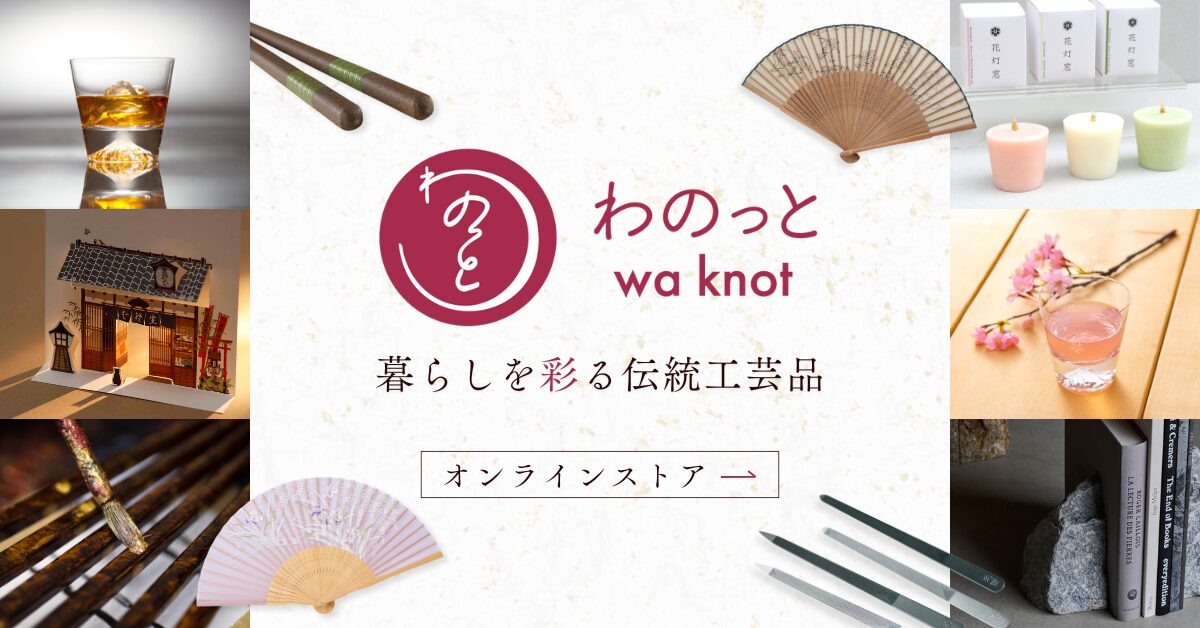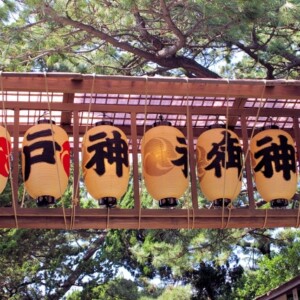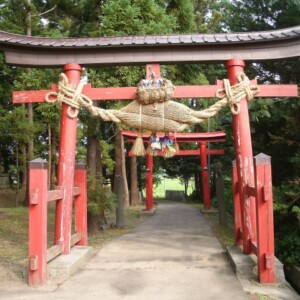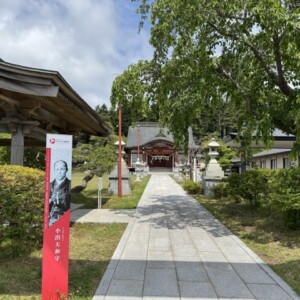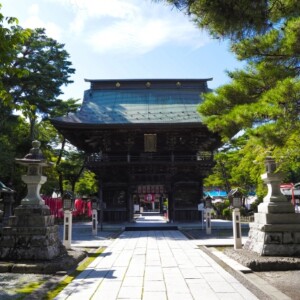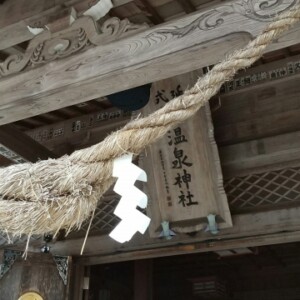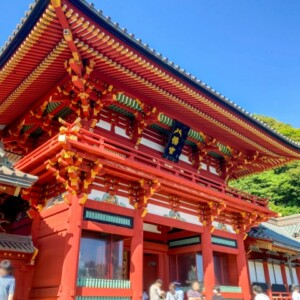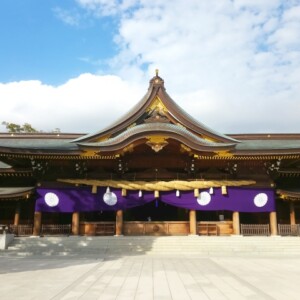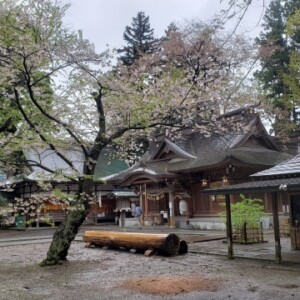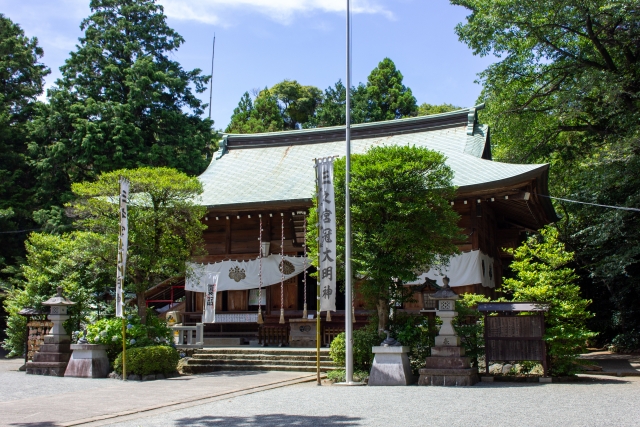
Sannomiya Hinata Shrine|Complete guide to the history, highlights, and worship information of this historic old shrine in Sagamiguni Sannomiya
Sannomiya Hiyata Shrine, located in Isehara City, Kanagawa Prefecture, is one of the oldest shrines in Sagami Province, boasting a long history of approximately 10,000 years. The shrine, which is highly prestigious as a Engi-shiki-uchi-sha and has the status of Sagami-no-Miya, enshrines Toyoconinu, the god of land creation, and has been loved by many worshippers.
Outline and basic information about Sannomiya Hiyata Shrine
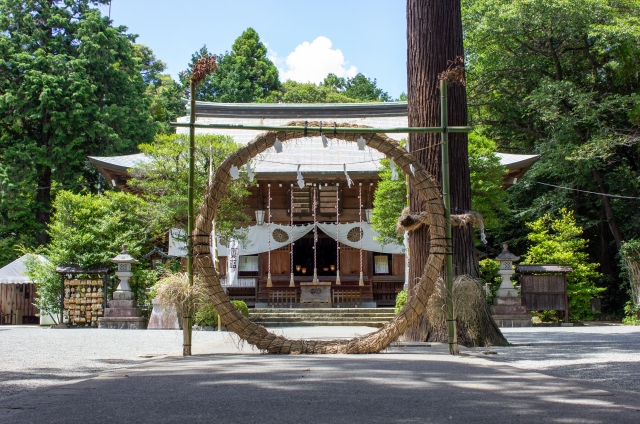
Sannomiya Hiyata Shrine is known as a shrine with a long history, which is recorded in the Engishiki Shinmeicho (Engi Shiki Book of Divine Records), which is said to have been compiled in the early 10th century. The origin of the shrine can be traced back to more than 10,000 years ago from the remains and relics excavated around the shrine, and it has been revered as a sacred place since ancient times.
The shrine today is positioned as one of the three shrines of Sagami Province and plays an important role as one of the five Sagami shrines in the Kunifu Festival held annually on May 5 in Oiso Town. Locals have long known the shrine by the nickname “Sannomiya-sama,” and the name of the location, “Sannomiya,” is derived from the company.
History and Origin
The history of the shrine can be traced back more than 10,000 years, based on excavated remains and relics from the shrine grounds and the surrounding area. According to the shrine legend, the shrine was founded in the 6th year of the reign of Emperor Jinmu, the first Emperor of Japan, when people selected this area as the best place to worship the gods, built a shrine to worship the gods, and enshrined Toyokoninu no Mikoto as the Sacred Spirit of Japan with Mt.
In the subsequent history of the shrine, in the 7th year of the Emperor Subhashin’s reign, the shrine was given the sacred land “Kobe,” and in the first year of Taika (645), the shrine was renovated by Nusei Asaomi Shikabuchi, the provincial governor of Sagami-no-kuni. A pair of wooden guardian dogs, still preserved as an important cultural property, was dedicated at this time, and two deities, Oshukaijin and Koshukaijin, were enshrined together.
In 832, the shrine’s prestige was further enhanced when Emperor Junna granted the shrine the divine title of “Crown Grand Myojin,” the head shrine of Sagami Province, to Tachibana Asaomi Mineshi, a provincial governor, as an imperial envoy. The shrine has long been worshipped by Asano, as evidenced by the dedication of a sacred horse by Minamoto no Yoritomo during the Kamakura period (1185-1333) to pray for the safe delivery of his wife, Hojo Masako.
Gods and Benefits
The main deity is Toyokoninu (also known as Toyokuninushi), who is revered as the god of land creation. This deity presides over the earth, development, invention, and creation, and is the one who prepares the ground on which we live and watches over the growth and nurturing of all things.
Other deities enshrined at the shrine include Ama-no-Meitama-no-Mikoto (god of jade creation, mysterious spiritual power, and childbirth), Wakuhi-no-Musume-no-Mikoto (god of weaving and clothing), and Nihon-buson (god of wisdom and bravery, success in life, good fortune, disaster prevention, and transportation). In the second hall, there are also enshrined Oshukaijin (god of sake brewing, sake business, and fire protection) and Koshukaijin (god of marriage and safe childbirth), attracting visitors seeking a variety of benefits.
The shrine is especially revered by sake brewers because of its enshrinement of the god of sake brewing. The main deity, Toyokoninu, is worshipped as the god of land creation and as the god of good marriage, marriage, childbirth, childcare, enrollment in kindergarten, entrance into school, employment, business, transportation, and other important aspects of life, as well as the god of disaster prevention and good fortune.
Sannomiya Hiyata Shrine Highlights and Features

The precincts of Sannomiya Hijita Shrine boast an area of approximately 4,500 tsubo (approximately 4,500 m2), and are a sacred space surrounded by dense old-growth trees. The harmony of cultural assets backed by a long history and the natural beauty of the area deeply impresses visitors.
Architectural and Structural Attractions
The main hall of the shrine is a majestic structure that exudes an overwhelming presence to visitors. The hall of worship is also spacious, allowing visitors to worship in a tranquil atmosphere with a sense of serenity. The layout of the shrine grounds is in accordance with ancient ceremonies, and the spatial configuration from the approach to the main hall naturally leads worshippers to a feeling of holiness.
To the west of the shrine are the ruins of the former shrine building, called Motomiya, and a small torii gate and stone shrine are located west of the Sannomiya Hiyata Shrine and up the hill. This is Motomiya, the site of the old shrine pavilion of Sannomiya Hijita Shrine. This Motomiya Shrine is known as a special power spot. The view from Motomiya Shrine is spectacular, and on a clear day, you can see all the way from the city to Sagami Bay.
Nature and scenic beauty
Aioi no Zelkova” and “Sugi no Goshinmoku” (sacred cedar trees), said to be over 500 years old, stand tall on the shrine grounds, testifying to the shrine’s long history. These giant trees are symbolic of the shrine and give a mystical impression to many visitors.
The excavated “Tateishi” (menhir), a stone circle of circular arrangement of stones (stone circle) from the middle Jomon period, is said to be the sacred body of the ritual site, and represents an indicator of primitive shrine beliefs and ancient belief in sacred places, indicating that this area has been a special place since time immemorial.
The nature on the grounds changes beautifully throughout the four seasons, and visitors can enjoy the sacred beauty of each season: fresh greenery in spring, green leaves in summer, autumn leaves in fall, and snowy landscape in winter. In modern times, flower basins have also been installed, creating a space where tradition and modern beauty are in harmony.
Cultural Properties and Important Collections
Sannomiya Hijita Shrine preserves many valuable cultural assets that tell the story of its long history. Of particular note are a pair of carved wooden guardian dogs that were dedicated to the shrine in 645, the first year of the Taika era (645), when the shrine was renovated by Nusei Asaomi Shikabuchi, the provincial governor of Sagami Province, and are now designated as important cultural assets by Kanagawa Prefecture.
Also designated as an important cultural property is the “Quail Mika,” which houses a Sue ware called a “quail vase. This is a special sacred treasure that is only brought out from the main shrine during the “Sake Festival” held every year in late November, and has attracted many devotees due to its mysterious nature.
The Sannomiya Local Museum, which is attached to the shrine, displays over 2,000 archaeological artifacts, and visitors can see horse harnesses, swords, jade, earthenware, and other secondary burial objects excavated from the tumulus cluster around the shrine. The quality of these artifacts is extremely high, and they are considered to be burial accessories offered to the highest authorities in ancient Sagami, making them valuable materials for understanding the ancient history of this area.
Visiting and Worship Information
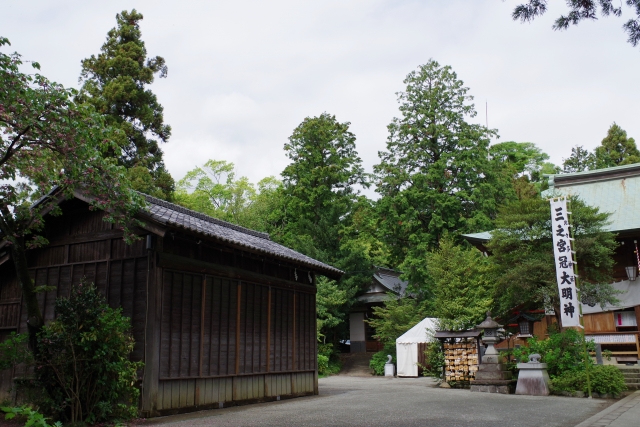
Sannomiya Hiyata Shrine welcomes worshippers throughout the year, allowing them to enjoy beautiful seasonal events along with the traditional manners of worship. In this sacred space with a history of approximately 10,000 years, you will receive blessings from the gods through wholehearted devotion to the shrine.
Worship Etiquette and Manners
When visiting a shrine, the basic manners are to bow before passing through the torii gate and to walk down the approach to the shrine avoiding the center of the path. At the hand- and mouth-cleansing booth, purify your body and mind in the order of left hand, right hand, and mouth, and then proceed to the hall of worship.
At the hall of worship, you should bow to the deity in the manner of “ni-ai ni clap-toe ichi-ai” (two bowing, two clapping hands). First, bow deeply twice, then clap twice in front of your chest, and finally bow deeply once to express your gratitude. When you visit the shrine, express your gratitude for the daily prayers, and if you have a specific wish to make, you should express it politely from your heart.
At Sannomiya Hijita Shrine, the main deity, Toyokoninushi, is the god of land creation, and blessings can be received at various stages of life. In particular, many people visit the shrine to pray for the start of a new business venture, for matchmaking, for the birth of a child, or for the safety of one’s family.
Annual & Seasonal Events
Sannomiya Hiyata Shrine holds various festivals throughout the year, the most important of which is the annual grand festival held on April 22, where three floats parade in a grand procession, known as one of the most important festivals in the area.
On May 5, Hijita Shrine plays an important role as an intermediary between Ichinomiya and Ninomiya in the Kunifu Matsuri (Kounomachi) held in Oiso Town, where the Sagami Province’s Ichinomiya Samukawa Shrine, the Sosha (Gonomiya) Hiratsuka Hachiman Shrine, and the Sosha Rokusho Shrine gather. As a traditional festival of Sagami Province, the Kunifu Matsuri is a valuable cultural event that has continued to be held since ancient times.
In June, the Natsukoshi-no-Oharai (summer purification) ceremony is held, in which attendees pass through a “thatch ring” to purify their bodies and souls of impurities and pray for good health. This event is an important ritual to purify the body of sins and impurities that have unknowingly accumulated, and to pray for a healthy and bright life.
On the third Saturday and Sunday of May, the “Magatama Festival” is held, featuring a variety of events by more than 30 groups over a two-day period, including dedication dances and performances on a special stage in front of the main shrine, the very popular magatama ball making, a flea market, and sales of local products.
In late November, the “Sake Festival” is held as a special ritual, in which the “Quail Mica,” an important cultural asset, is brought out from the main shrine.
Red Seal and Good Luck Charm Information
Sannomiya Hiyata Shrine offers red seals to commemorate visits to the shrine. Two types of red seals are available for a starting fee of 500 yen and a facing red seal for 1,000 yen, and are available from 8:30 a.m. to 4:30 p.m. on days and times available. They are also distributed at any time during Hatsumode (New Year’s visit), Natsumode (Summer visit), Shihanmode (New Year’s visit), and Sakuhimode (First day of the New Year).
The shrine also offers red seals for the 25 shrines under its jurisdiction, making it a valuable opportunity for those who enjoy red seal pilgrimages. Since red seals are only available in the form of a book, visitors are requested to bring their own red seal book.
Various types of good luck charms based on the divine virtues of the main deities are available. The shrine offers various types of good luck charms, including those for good luck and to ward off bad luck, which are based on the blessings of Toyokoninushi, the god of land creation, as well as those for good luck in marriage, childbirth, traffic safety, and prosperous business. Please ask at the shrine office when you visit the shrine for more details about the types of amulets and the initial fee.
Access and Usage Information
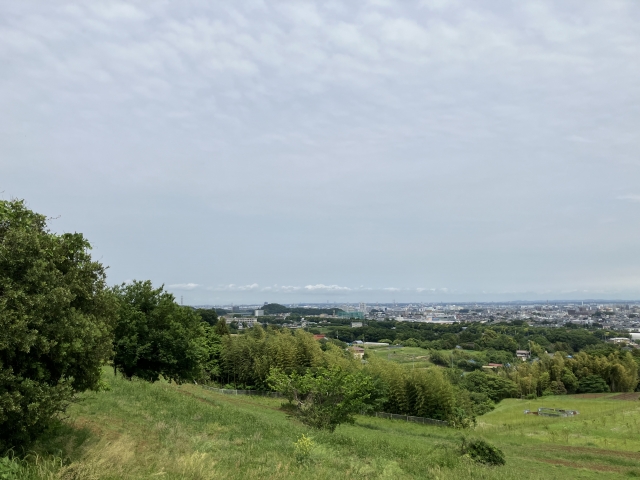
Sannomiya Hiyata Shrine is located in Isehara City, Kanagawa Prefecture, and is easily accessible from central Tokyo. It is generally accessible by public transportation using trains and buses, but can also be reached by car.
Traffic Access
By train, the nearest stations are “Isehara Station” or “Tsurumaki Onsen Station” on the Odakyu Odawara Line. The location is conveniently accessible from central Tokyo in about one hour.
From Isehara Station, take the Kanagawa Chuo Kotsu bus. The most convenient route is to take the North Exit Line 1 (bound for Kurihara via Sekidai) → get off at “Hiyata Shrine” (about 15 minutes) → walk immediately to the shrine.
Another route is to take North Exit Line 1 (bound for Tsurumaki Onsen via Osumidai) → get off at “Kobe” (about 12 minutes) → walk about 12 minutes, or take North Exit Line 4 (bound for Isehara Shako via Tonomura and Ishikurabashi) → get off at Sannomiya (about 12 minutes) → walk about 5 minutes.
From Tsurumaki Onsen Station, take Line 2 (for Isehara Station North Exit via Osumidai) → get off at Kobe (approx. 12 minutes) → approx. 12-minute walk.
If coming by car, it is very accessible, taking approximately 5 minutes from the Isehara-Oyama Interchange on the New Tomei Expressway.
<Address> 1472 Sannomiya, Isehara-shi, Kanagawa 259-1103
Hours of Admission, Fees, and Parking Information
The premises of Sannomiya Hiyata Shrine are basically open to visitors year-round, but the reception hours of the shrine office and the hours for the conferring of red seals are from 8:30 to 16:30. The shrine itself can be visited free of charge.
The Sannomiya Folk Museum is open from 09:00 to 16:00, closed on year-end and New Year’s holidays, regular festival days (April 22), and Setsubun (New Year’s Eve), and admission fees are 200 yen for adults (150 yen) and 100 yen for children (70 yen), with group discounts for groups of 30 or more people indicated in parentheses. The museum is open free of charge all day during the Magatama Festival on the third Saturday and Sunday in May.
Parking spaces are available for visitors to the temple, but they may be full during busy times such as the annual festival and New Year’s holidays. Public transportation is recommended for large festivals.
Buses are limited, so please check the Kanagawa Chuo Kotsu website for timetables before you go. Also, if you plan to visit Motomiya, please wear comfortable walking clothes as you will need to walk up the slope from the main shrine for about 7 minutes.
Reference sites
Hiyata Shrine official website: https://hibita.jp/
Kanagawa Prefectural Shinto Shrines Agency: https://www.kanagawa-jinja.or.jp/shrine/1209179-000/
Isehara City Official Website: https://www.city.isehara.kanagawa.jp/oyama_mairi/heritage/hibitajinja/


